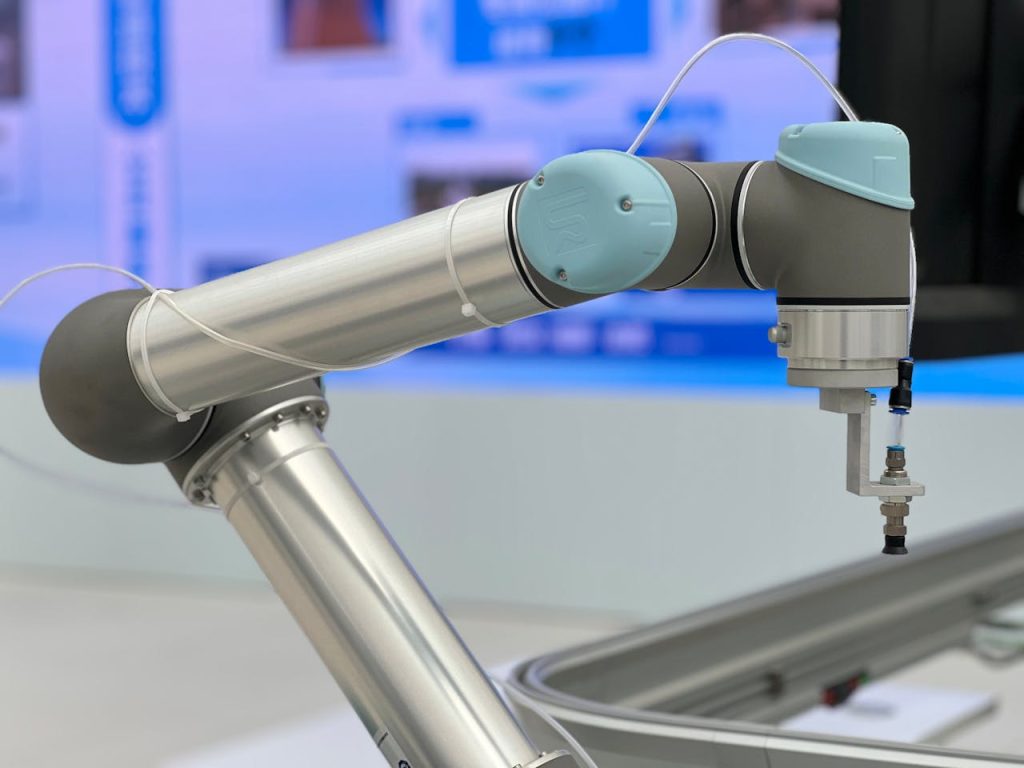The rise of collaborative robots, or cobots, marks a pivotal moment in the evolution of automation. Unlike traditional industrial robots that work in isolation, cobots are designed to work alongside humans, providing a more flexible and efficient solution for modern industries. These robots are not only changing the way tasks are performed but are also transforming entire sectors by enhancing productivity, improving safety, and fostering collaboration between human workers and machines. In this article, we’ll dive into the real-life applications of cobots and explore how they are reshaping industries across the globe.
Understanding Cobots and Their Unique Advantages
Cobots are designed with the primary purpose of working in harmony with humans. Unlike traditional robots, which are often confined to safety enclosures and perform tasks independently, cobots can safely operate near human workers without the need for barriers. This unique feature makes them highly adaptable and versatile, capable of being integrated into existing workflows with minimal disruption.
The defining characteristics of cobots include ease of programming, a flexible range of applications, and built-in safety mechanisms. These robots are equipped with sensors that enable them to detect and avoid collisions with humans, ensuring a safe working environment. Moreover, cobots can perform repetitive tasks with precision and consistency, making them an invaluable asset in industries that require high levels of accuracy.
The advantages of cobots extend beyond just their technical capabilities. They are also a more cost-effective solution compared to traditional industrial automation systems. Cobots can be deployed with minimal upfront investment and are easy to reprogram and redeploy for different tasks. This makes them particularly appealing to small and medium-sized enterprises (SMEs) looking to enhance their operations without a massive capital outlay.
Cobots in Manufacturing
Manufacturing has been one of the earliest adopters of cobot technology, and for good reason. Cobots are being used across various stages of production, significantly improving the efficiency of manufacturing processes. One of the most prominent applications of cobots in manufacturing is assembly line optimization. These robots are capable of handling repetitive tasks such as component assembly, packaging, and quality inspection with a level of precision that reduces the risk of human error and enhances the overall productivity of the line.
Cobots are also being employed in quality control. In industries like electronics and automotive manufacturing, where product defects can have costly consequences, cobots equipped with vision systems can inspect products in real-time. These systems can identify imperfections or deviations from specifications, ensuring that only flawless products reach consumers. The speed and accuracy of cobots in quality control not only improve the end product but also reduce the need for human intervention in routine checks.
For example, a major automotive manufacturer integrated cobots into their assembly line to handle the installation of intricate components in their vehicles. The cobots were able to work alongside human workers, performing delicate tasks that required precision while allowing humans to focus on more complex parts of the production process. This collaborative approach resulted in higher production speeds and fewer defects, ultimately boosting the company’s bottom line.
Cobots in Healthcare
The healthcare sector has also seen significant improvements due to the implementation of cobots. These robots are used in a variety of roles, ranging from surgical assistance to patient care, enhancing both the efficiency and quality of services provided in medical environments.
One of the most impactful applications of cobots in healthcare is in the field of surgery. Robotic-assisted surgeries, where a surgeon controls a robotic armhttps://www.sciencedirect.com/topics/engineering/robotic-arm to perform highly precise operations, have become increasingly common. Cobots provide the surgeon with enhanced dexterity, stability, and the ability to perform minimally invasive procedures with greater accuracy. This results in reduced recovery times, less trauma to patients, and more efficient use of operating room resources.
Cobots in Logistics and Warehousing
Logistics and warehousing are sectors where cobots are playing an increasingly significant role. As e-commerce continues to grow, so does the demand for faster and more efficient order fulfilment. Cobots are helping to meet these demands by automating key tasks such as inventory management, order picking, and sorting.
In warehouse settings, cobots are used to move goods from one location to another. These robots can efficiently navigate large spaces, transporting products to designated areas or directly to human workers for further processing. The ability of cobots to perform these tasks without human intervention significantly reduces the time and labour required to manage large inventories.
Conclusion
Cobots are no longer just a futuristic concept — they are actively transforming industries across the globe. From manufacturing and healthcare to agriculture and logistics, cobots are helping businesses improve efficiency, reduce costs, and enhance safety. As technology continues to evolve, the potential applications of cobots are only set to grow, offering new opportunities for industries to innovate and evolve. With their ability to work alongside humans in a safe and collaborative environment, cobots are poised to shape the future of work, revolutionizing the way we approach automation.

